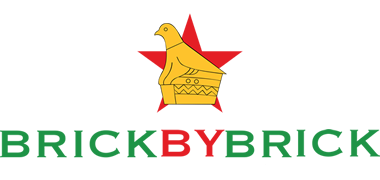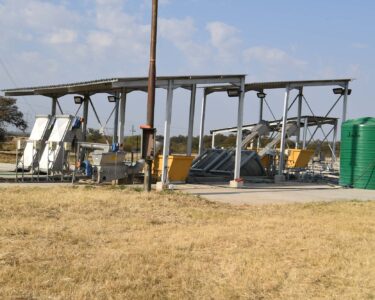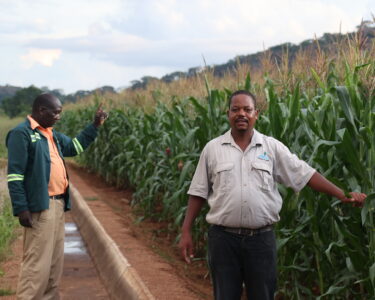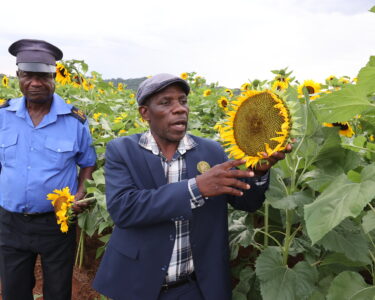When in August 2017, the then Vice President (now President) Mnangagwa was poisoned during a rally in Gwanda and was airlifted to Gweru and later to South Africa for specialist medical attention, it started a chain of events that would one day ignite a medical revolution. How, the uninformed might ask? The answer is, on recovering, President Mnangagwa decided to turn adversity into an opportunity.
Having been impressed by what he saw in South Africa, President Mnangagwa vowed to do everything in his power to ensure that Zimbabwe’s medical facilities were on par with those across the Limpopo. “So I made a decision that the level of medical technology in South Africa must be [replicated] in Zimbabwe,” said President Mnangagwa while addressing the Kwekwe business community soon after officially opening the National Pathology Research and Diagnostic Centre (NPRDC) at the Midlands State University in June 2022.

It was, indeed, a visionary President Mnangagwa who spearheaded the establishment of the state-of-the-art NPRDC which, according to the MSU Vice Chancellor, Professor Victor Ngonidzashe Muzvidziwa, is the institution’s “signature project”. In this Q&A with the Brick by Brick magazine, Prof Muzvidziwa foresees the pathology centre becoming a “Centre of Excellence” in line with President Mnangagwa’s wishes.
Question: Professor, before talking about the Pathology Centre, can you briefly tell us about the Midlands State University?
Answer: The Midlands State University (MSU) was established by an Act of Parliament in 1999. It opened its doors in 2000 with an initial enrolment of 400 students. Currently, the student population [at both undergraduate and postgraduate levels] stands at around 26 000. We anticipate to grow to about 35 000 in the near future. This exponential growth has been accompanied by commensurate growth in the university’s infrastructure.
That growth is mainly in the areas of engineering and the medical field. We have just started a medical degree with 20 000 students over the last six years. This is the area with the greatest potential for growth.
Our growth strategy has been through the multi-campus approach. As a result, we have the main Gweru Campus which is complemented by two learning centres — the Zvishavane Campus and the Harare Campus – over and above an upcoming campus in Kwekwe and a learning centre in Bulawayo where we will soon be constructing another campus.
Over the years, we have expanded our programmes in tandem with industry needs. We have nine faculties and three research institutes. We are a stakeholder-driven institution and that has been our backbone.
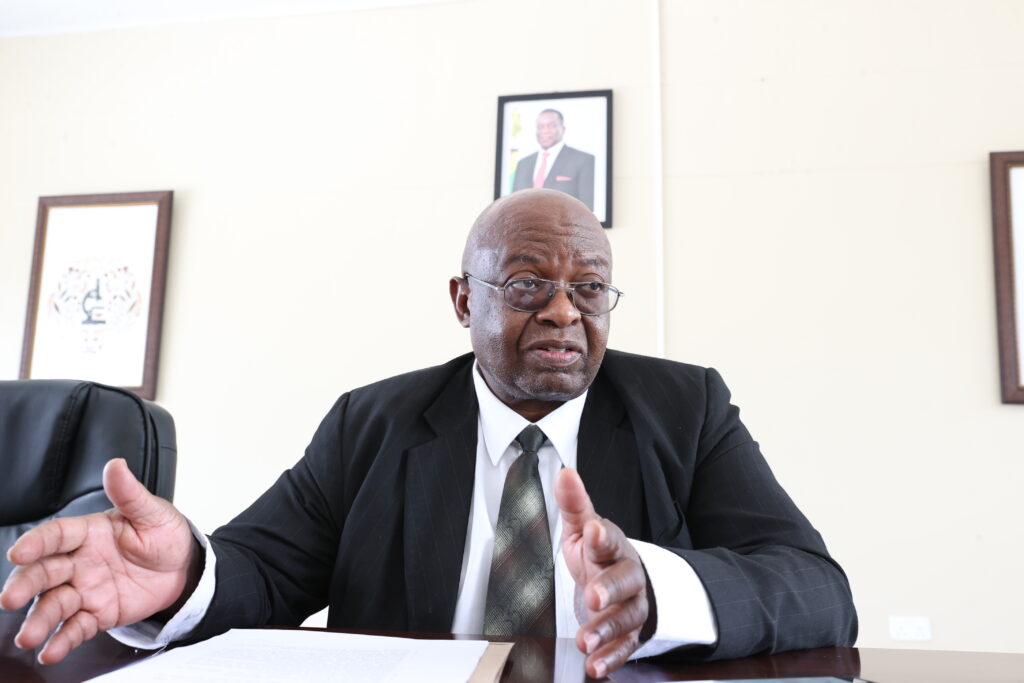
Q: Can you tell us what the National Pathology Research and Diagnostic Centre is all about?
A: The National Pathology Research and Diagnostic Centre is our signature project because through it, our uniqueness will be experienced. It’s a result of teamwork. But, above all, it is a symbol of our unwavering support for President Mnangagwa’s mantra of building Zimbabwe “brick by brick”.
The NPRDC has a Diagnostic Laboratory which offers specialised and routine tests. All the equipment is state-of-the-art. It also houses a Radiology Section, which has X-ray, ultra-sound, CT scan, mammography facilities. MRI [Magnetic Resonance Imaging] is currently not available, but is the cards. We also have a Research, Innovation and Development Unit which focuses on vaccine production and drug recovery. Construction started in August 2021. It was completed and officially opened in June 2022.
Q: The MSU is really excited about this centre. Can you tell us why the NRPDC is so important to the MSU and the country?
A: The medical profession is founded on pathology. You start with pathological studies, then you have your medicine. The clinical disciplines are nothing without pathology.
Under the Second Republic, the Ministry of Higher and Tertiary Education asks every university come up with its area of specialisation. We, as MSU, were unanimous that we wanted a pathology centre. Why? Our decision was based on the fact we had established a new Faculty of Medicine and pathology, from our point of view, was under-explored. It’s a new and exciting area which offered us plenty of room for growth.
This project excites us because pathology is the foundation of medicine. This centre will offer students an opportunity to specialise and collaborate with researchers from within and outside the country. I see the NPRDC as a cash cow. When you look at how much Zimbabweans are spending on medical attention in foreign lands, it’s staggering. That is why at the other end of the pipeline, we are considering setting up a teaching hospital. Like the NPRDC, the proposed teaching hospital will be a highly specialised institution, up there with the very best the medical field. Our goal is to have the teaching hospital on stream in the next two to three years since we have already laid the foundation with the establishment of the NPRDC.
I must say Education 5.0 is a very interesting concept. The most important thing in education now is not the teaching, but turning theory into practice. In other words, putting what you have learnt into practice, by producing tangible goods and services. I can see that coming to fruition here at the MSU through this Pathology Centre and the proposed teaching hospital. I have no doubt in my mind that the goods and services we are going to offer will go a long way in boosting our health delivery system.
What you are seeing here is Education 5.0 in practice. This centre is also pivotal to the delivery of health care in the [Midlands] province and ultimately the whole country. Once we excel in pathology, our health is assured.
Very often we start on the “wrong” foot – [training] medical doctors and nurses. The doctors and nurses are simply there to deliver, but the question is, what is it there to deliver? In the absence of pathology, there are no vaccines, no medicines and, ultimately, no pharmaceuticals.
Pardon me, if I am wrong, but I believe, as a country, we had totally neglected this medical discipline called pathology. We have pharmacists who have been reduced to marketing officers because we were importing the bulk of our pharmaceuticals. Now we want our own pharmacists to start producing drugs and other medications locally.
The MSU has also launched what we call the Indigenous Fruits and Herbs Project to complement the NPRDC’s pioneering work. Indigenous fruits and herbs, especially the latter, are known to offer numerous medicinal benefits but there has been very limited research in this field. One of the NPRDC’s goals is to conduct research into how we can use our fruits and herbs to fight chronic diseases and other life-threatening ailments. In China, for example, patients are free to choose between Western medicine and their own traditional medicines. Both enjoy equal respect because they are based on scientific research.
Zimbabwe is not short of traditional medicine. The only problem is that very little research has been done in this area. Are you aware, for example, that a snake bite need not be fatal, as long as the necessary herbs are administered to the victim within minutes of the incident?
Unfortunately, these treatments are not documented. We need to recapture [and document] this knowledge because it’s very useful. As MSU, our aim is to give credibility and respectability to all medicines, be they traditional, Western or Oriental.
Q: Why do you think many people in Africa seem to shun traditional medicines?
A: This is largely due to the fact that colonialism succeeded in equating traditional medicines with evil. If you were seen using any herbs, people looked at you with suspicion. But we are now saying, all medicines, even supernatural interventions, are welcome. All medicines contain chemical elements and healing properties and there is no reason to frown upon one at the expense of the other. We should, therefore, respect all medicines regardless of their source and proceed to lay a solid foundation that will elevate us to where we ought to be.
Traditional medicines aside, for us at the MSU, the Pathology Centre is a key pillar in both medical training and research. It will offer training to students in specialised techniques, collaborative research and revenue generation for the institution.
Q: Professor, can you briefly outline for Brick by Brick readers some of the benefits of pathology?
A: Pathology is fundamental in informing clinical decisions. It is central to the effective delivery of health care. It also plays a key role in supporting clinical care. In addition, pathology helps us identify new diseases and to keep [an up-to-date] disease registry. All this is critical in informing national health policies.
For our country as a whole, it means availability of timeous and affordable delivery of pathology services to our clinicians for the benefit of our people, and also evidence-based health policies. Some of the tests that we have been outsourcing to the region will now be done locally, thus improving turnaround time at the same time saving on scarce foreign currency resources.
The NPRDC will also help our nation in the fight against crime. Forensic pathology is a key pillar in global best practices in criminal investigations and the legal profession. The centre also offers radiology services and this will go a long way in improving our health service delivery.
Q: Professor, cancer is ravaging the world in general and Africa in particular. Do you think this Pathology Centre will provide us with answers as to why cancer has become such a menace on the continent?
A: Yes, this Pathology Centre must find answers as to why cancer cases are going up in Africa. It’s a disturbing phenomenon because until a few decades ago cancer was associated with affluence and often written off as a “white man’s disease”, i.e. confined to the Western world. Now, the so-called “Western diseases” have come to haunt Africa. Is this because of changes in lifestyle, particularly our diet? These are some of the issues for which the centre will strive to seek answers.
In terms of cancer research, I believe the NPRDC is going to be one of the most advanced centres in the Sadc [Southern African Development Community] region, region. We want to work not only with our local medical practitioners and scientists, but we are going to rope in our counterparts in the region and beyond so that we can get to the bottom of the matter.
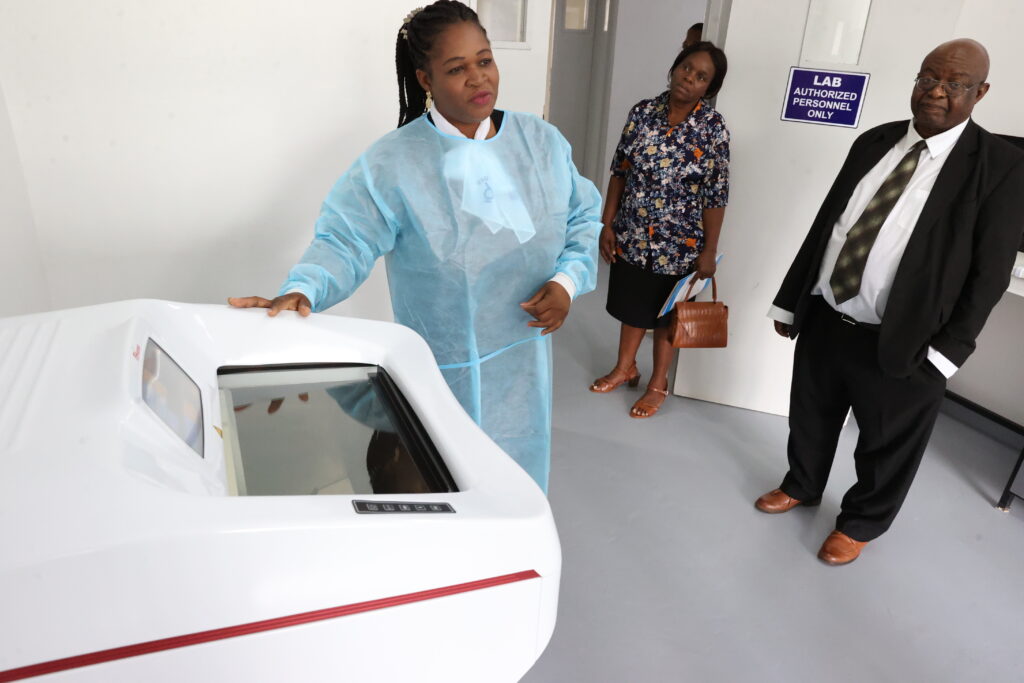
Q: It has been quite a nightmare for the general public to access some of the medical services you are now offering at the centre. How affordable are your services?
A: Because government invested heavily into this centre, we are debt-free and so our charges will be reasonably low. We have taken a deliberate decision that our charges will be at least 60% of those charged by the market. And since we are not paying anything back to government or commercial bank, there’s no reason why cannot break even or make a small profit. So, yes, we are going to be much cheaper, but without compromising on the high standards we have set for ourselves.
Our aim is that, as much as we want to be a [profit-making] business unit, our services should be affordable. Yes, thousands of patients have been travelling out of the country [at considerable cost to themselves and the country] for this or that medical test. Now we are saying, they should save their hard-earned money by coming to us instead. The services they were seeking in India and South Africa are now available right here on their doorstep. Our technicians are not only highly skilled but have the latest technology at their disposal. The only difference is that some of them [technicians] are still young, but with experience they will be second to none.
For now, we are busy marketing the centre, so that the public knows that we exist.
Q: How much was spent on constructing this centre?
A: The total expenditure came to about ZWL$700 million. This is peanuts [for a project of this magnitude]. It could easily have been three times more, possibly ZWL$2 billion. Why was the cost that low, you may want to know? The answer is, around 2016 and 2017, the MSU established its own construction unit. It was this unit which we used in the construction of the centre. Any person versed in construction will tell you that the biggest cost usually comes from hiring consultants, notably engineers, electricians, etc. These can gobble up to 25% of your construction costs.
Thanks to the existence of the construction unit, we had our own engineers, technicians, electricians, architects, builders, etc. Of course, we paid them but obviously not as well as their counterparts in the private sector. But we are going a step further by capacitating this unit so that it can offer its services to non-campus clients under the MSU banner. For the construction unit, helping in the construction of the pathology centre was way of putting into practice what they had learned in class. In other words, it was part work, part training and part research.
Naturally, our students are excited about this development. Those in Medicine and Health Sciences also stand to benefit since this facility is going to assist them in terms of training, research and access to advanced medical services. Aside from delivering pathology and radiology services to our student population and the community at large, the NPRDC is going to be a shining beacon in terms of research and innovation.
Q: Besides the students who else is going to benefit?
A: The short answer is, if you are in the Midlands, you should be able to benefit from the MSU Pathology Centre. Our doors are open to all – rich or poor. This applies to individuals, communities, our staff, our students, the whole country and the region. We are going to tap into the regional market because, to quote His Excellency, President Mnangagwa, “we want to be the Centre of Excellence”! This is government policy specifically to make sure our universities champion real development. We have embraced it wholeheartedly.
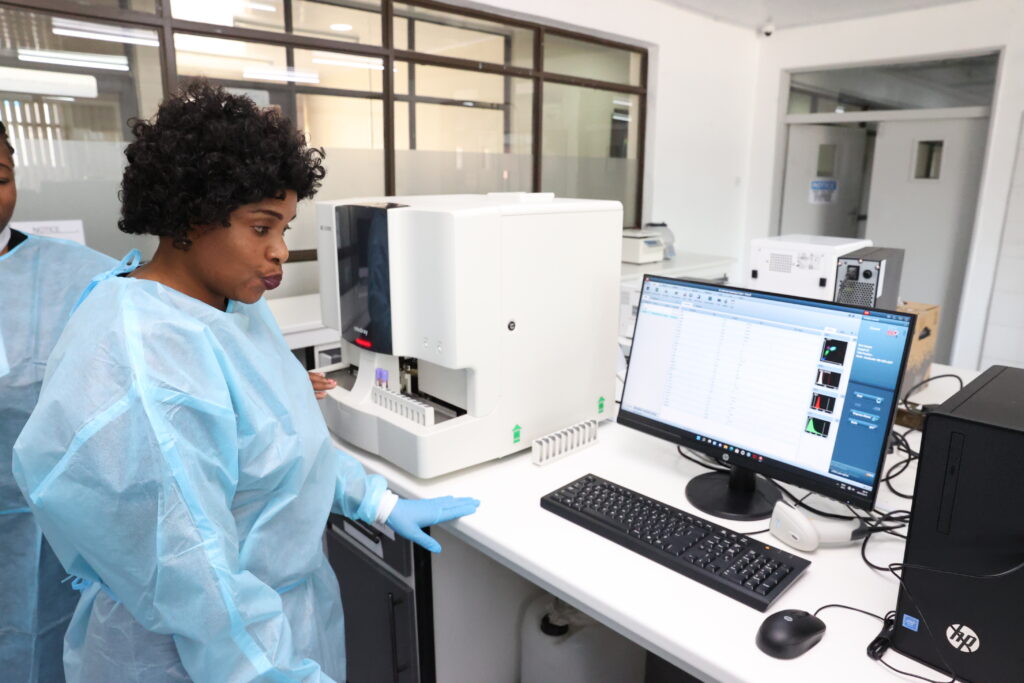
Q: How confident are you that you will indeed turn the NPRDC into a “Centre of Excellence,” as the President instructed you?
A: First and foremost, good health is indispensable. In terms of staff morale, we have put in place measures to retain key staff by paying them well. Our goal is that by mid-2023, the centre should be in a position to earn sufficient income for it to pay competitive salaries. We don’t want anyone working here to consider leaving over “poor salaries”. The NPRDC is a business unit and, as such, it must be able to operate at a profit.
Out of the staff complement recruited since the pathology centre’s official opening, only one has left. Therefore, in terms of staff retention, we are on the right track. We are still paying them in the local currency, but when they start generating forex, part of their salaries will also be paid in foreign currency. So we should be able to not only retain but attract the best in the field.
Q: What are your future plans regarding this centre?
A: This centre will become the regional Centre of Excellence in specialised pathology services, diagnostic imaging and innovation through research and development. When people talk about pathology in the region, the MSU Pathology Centre should be part of the conversation despite its infancy. Being young obviously has its advantages and disadvantages. We think in pathology we will excel and we are going to play a critical role in the medical field. That is almost assured.
Q: What were some of the challenges you faced while building this centre?
A: Building a centre of his magnitude was never going to be a stroll in the park. But we did it in a record eight months, often working over weekends and at night in order to meet tight deadlines. One of the major challenges we faced was do with erratic power supplies. To compound matters, Zimbabwe, like the rest of the world, was reeling from the effects of the Covid-19 pandemic. Because it was largely unanticipated, unplanned and unforeseen, it definitely affected our progress. At first, our workforce were reluctant to report for work, but gradually the turnout improved with the advent of PPEs [personal protection equipment].
We also had to contend with a highly volatile exchange rate. This meant that in order to safeguard value we had to buy the required materials as quickly as possible. But on the positive side, thanks to a Presidential directive, procurement regulations for those institutions, like MSU, who were setting up innovation hubs, were relaxed.
On the other hand, we were hit by an unexpected staff exodus after some workers were lured elsewhere by USD salaries. As a result, we were forced to travel all the way to Gokwe and Nembudziya to find replacements — bricklayers, carpenters and artisans. We recruited between 70 and 80 of them. Although the majority of them did not have the requisite qualifications, they compensated with vast experience in the construction industry. Notwithstanding their lack of formal qualifications, they did a fantastic job here as you can see.
The good thing is that these myriad challenges did not scupper the project. In fact, the challenges empowered us by forcing us to think outside the box. It reminded me of the time when the idea of setting up our own construction unit was first mooted. Some of our academic staff felt doing was illegal, but we forged ahead. Today, all [State] universities have followed our example. It helps reduce costs when it comes to on-campus projects.
Q: What role do you think institutions like MSU can play in ensuring that the country achieves Vision 2030?
A: I have been at institutions of higher learning since 1983 and I can confidently say it’s the first time higher education has been given a clear mandate to help develop the country. It’s an onerous task, but one which have grabbed with both hands and we will do it through our innovative skills as the custodians of knowledge. The tertiary sector is no longer perceived as a consumption sector, but a critical social services sector.
When you think of development, production of goods and services and new industries coming on board, you will find that it is universities which are at the forefront. We are not doing anything new. In fact, that is the standard practice. [A once-poor and former Japanese colony] South Korea is now a First World country. How did it get there? The answer lies in its robust tertiary sector. The same applies to Singapore, which owes part of its economic miracle to the National University of Singapore and sister institutions. In the motor industry, some components [of top-of-the-range vehicles like BMW] are being designed at university level.
We have to generate knowledge and innovations that can be turned into goods and services. We have gone a step further in that we are commercialising our knowledge and innovations. This is how service and manufacturing industries are born. This is how we, as universities in general and MSU in particular, are actualising Education 5.0. We are no longer ivory towers.
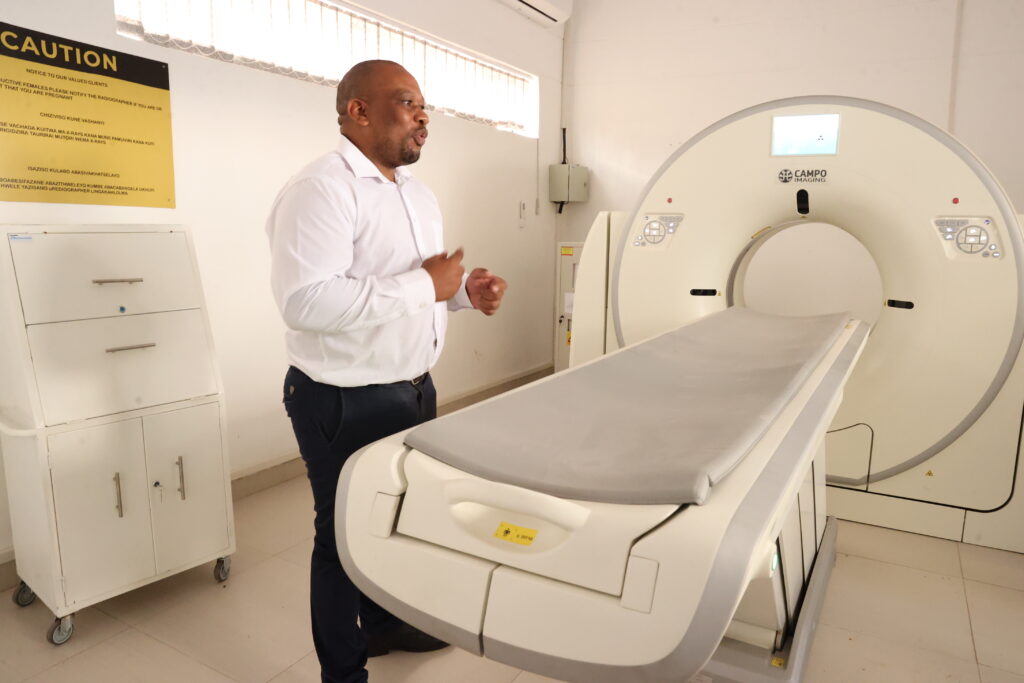
Unless and until universities take that initiative, economic development will remain a pipedream. Universities are the [engine room] of the locomotive. Until now, our universities have been paying lip service to developmental issues. Their role has been to produce half-baked graduates who take orders, people who are docile, people who are neither creative nor innovative. In short, our universities have been churning out graduates who are just good at applying for jobs.
The Second Republic has made it absolutely clear that universities are agents for development. In this regard, we expect the MSU Pathology Centre to produce vaccines and drugs that are suited not only to our environment but our physiology as well. When our students go to study at Oxford, Harvard, etc, they always shine. We want them to shine at home.
The Bible says, “My people perish because of a lack of a vision”. That is very, very true. With no vision, we will perish. Why has Africa in general and Zimbabwe in particular not succeeded in developing to the same level as countries in the First World? The answer is simple – we had no vision. Now the Second Republic has come in with a vision and, I can assure you, Zimbabwe will soon surprise many across the world. There is no country in this world that has been developed by another country.
During the liberation struggle, the rallying cry was “We are our own liberators”! It worked miracles. And so when President Mnangagwa says nyika inovakwa nevene vayo and that we are going to build it brick by brick, he is borrowing from our rich history. We have always been our own liberators, so there is no reason why we should not build Zimbabwe by ourselves, brick by brick.

